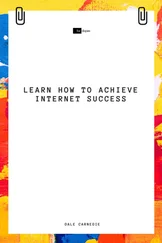Astrid Wood - How Cities Learn
Здесь есть возможность читать онлайн «Astrid Wood - How Cities Learn» — ознакомительный отрывок электронной книги совершенно бесплатно, а после прочтения отрывка купить полную версию. В некоторых случаях можно слушать аудио, скачать через торрент в формате fb2 и присутствует краткое содержание. Жанр: unrecognised, на английском языке. Описание произведения, (предисловие) а так же отзывы посетителей доступны на портале библиотеки ЛибКат.
- Название:How Cities Learn
- Автор:
- Жанр:
- Год:неизвестен
- ISBN:нет данных
- Рейтинг книги:4 / 5. Голосов: 1
-
Избранное:Добавить в избранное
- Отзывы:
-
Ваша оценка:
- 80
- 1
- 2
- 3
- 4
- 5
How Cities Learn: краткое содержание, описание и аннотация
Предлагаем к чтению аннотацию, описание, краткое содержание или предисловие (зависит от того, что написал сам автор книги «How Cities Learn»). Если вы не нашли необходимую информацию о книге — напишите в комментариях, мы постараемся отыскать её.
How Cities Learn — читать онлайн ознакомительный отрывок
Ниже представлен текст книги, разбитый по страницам. Система сохранения места последней прочитанной страницы, позволяет с удобством читать онлайн бесплатно книгу «How Cities Learn», без необходимости каждый раз заново искать на чём Вы остановились. Поставьте закладку, и сможете в любой момент перейти на страницу, на которой закончили чтение.
Интервал:
Закладка:
Using Policy Mobilities as a Methodology
The physical, social and theoretical movement of ideas, objects, people, and places can be difficult to study because they are constantly in motion, positioning and repositioning, erratically and sometimes irrationally. Policies-in-motion demand mobile methods, a methodology “better suited to mobile times” (Clarke 2012). My research methods are therefore simultaneously “on the move” (Cresswell 2006), including physical travel on buses and between research subjects and sites, and “moored” (Hannam et al. 2006) in the offices of policy actors and in the operational BRT systems (Wood 2016). More than simply uncovering the movement, however, this study unravels the intricate connections and dependencies between ideas, objects, people and places, relationships essential for the acceptance of mobile knowledge (Büscher and Urry 2009; Urry 2007). This methodology resonates well with Law and Urry (2004) who reason that existing methods rooted in places insufficiently address fleeting temporality or transplanting places; that is that we must follow the chains, paths, threads and intersections in order to address the transitory nature of mobility.
For policy mobilities, two approaches – “follow the policy” (Peck and Theodore 2010a) and “follow the project” (Peck and Theodore 2012), which combine multi-sited ethnography (Marcus 1995) with the extended case method approach (Burawoy 1998, 2009) – are typically employed. Peck and Theodore (2012) suggest that the researcher (and their research) travel alongside the policy, concentrating on the power and politics of translation. Such a methodology, Peck (2011b) reasons, enables researchers to contemplate the role of policy networks and epistemic communities that form connections for enabling policy movement, experimentation and mutation across different cities. This methodology can be challenging, however, because as Peck and Theodore conclude, “it is not always possible to ‘be here’, when in the study of global policy networks there is a constant imperative to also ‘be’ somewhere else” (2012: 25). They therefore advise that researching mobile policies need not always be a multi-sited venture, but it will often necessitate “methodological travel, along the paths carved by the policies themselves” (2012: 24). Most importantly, the methods used should be sensitive to both the peripatetic nature of policy models and their affiliated policy actors as well as to the unpredictable character of espousal and emulation.
I study policy mobilities from the perspective of the adopting locality and examine the means by which a policy from elsewhere was introduced, shaped and localized by local policy actors, their interactions with global advocates and inter-referencing across space and time. Rather than observing or shadowing people’s movements, as Marcus suggests in his understanding of “following the people”, this study asks people to interpret and reflect on their own decisions and learning processes. Similarly, it does not simply “follow the thing” from Bogotá to South Africa per se; instead my perspective looks at how South Africans interpreted the mobility and assembly of BRT. This study “follows the mobility” by tracing the adoption of BRT from the assembly of policy model, through to the actors who first introduced BRT to South Africa, before focusing on the adoption process. This methodology draws on the experiences of the actors involved in the circulation and adoption of BRT, learning from their experiences and interactions with the South African version of BRT. It entails incorporating the site of origination with the site of adoption and the various stops along the way, all of which influence the uptake of a particular policy approach.
Previous studies following the products (Choy et al. 2009; Cook and Harrison 2007) and policies (Goldman 2005; Roy 2010), suggest a sense of completed transfer in which the learning has concluded and the adoption accomplished. But the story of BRT in South Africa is neither concluded nor accomplished. It therefore requires a retrospective trail – beginning with the adoption process and tracing back to the initial learning – to allow for reflection by policy actors, on the false starts, and slow decision-making that lead (or not) to BRT implementation. It is possible that the research process itself may have contributed further to the multifaceted and constantly mutating nature of policy mobilities: perhaps in the course of the interview, a policy actor may decide to change the trajectory of future emulation, or they may appreciate the influence of distantiated sites thereby enticing future learning. This supports McCann and Ward’s (2012) call for researchers to move with the actors to understand how people, policy and place are made mobile. Rather than simply a physical movement between sites, this study moves temporally between the adoption of BRT and its initial arrival.
“Following the mobility” from the perspective of the adopting locality begins with interviews. Interviews are especially useful for probing beneath the socio-political exterior of the decision-making process. While interviews are sometimes criticized for being staged and scripted, especially when they involve educated and articulate elites (Peck and Theodore 2012), interviews are a relational process that expose not just the achievements of the adopting locality, but also the experimentation and failure associated with policy mobilities. They are also the best means for understanding the connections and disconnections between actors fueling the adoption process. This book developed inductively from their stories and experiences as well as their own learning process regarding BRT.
Interviews took place with senior planners and politicians from city (26 actors), provincial (2 actors) and national government (8 actors) as well as consultancies (26 actors), civil society (8 actors), academia (10 actors), donors (12 actors) and transportation operators (3 actors). 2Of those interviewed, 68 percent were male, 32 percent were female; and 70 percent were White, 14 percent Indian, 12 percent Black, and 4 percent Coloured. 3The meetings took place across South Africa from the Union Buildings and Parliament to the Civic Centre in Cape Town, the Metro Building in Johannesburg and the Transport Authority in eThekwini. More than two-thirds of meetings took place in either Cape Town or Johannesburg. Ten percent of respondents were located outside of South Africa – in Barcelona, Bogotá, Dar es Salaam, London, Manila, New York, Vancouver and Washington, D.C. – and these tended to be international consultants and academics. The majority of meetings were held in person at the participant’s office. On average, the interviews took 1 hour and 30 minutes with the longest lasting 3 hours and 37 minutes and the shortest lasting just 20 minutes.
In selecting study participants, I was careful to avoid merely “studying up”, by which Nader (1972) refers to studying the elites with power or “studying down”, by asking the powerless. Instead, I “study through” (Shore and Wright 1997). This meant meeting with the actors who moved, shaped and adopted as well as those who opposed BRT. The list of interviewees included those currently involved in BRT introduction – for example each city’s transportation officers, municipal politicians and engineers in the implementation agency – as well as those actors who have since moved on to other ventures – for example, from a city official to a private portfolio manager and from a minibus taxi driver to the CEO of a bus operating company.
I was also cautious against promoting agent-inflation, through which relatively unimportant actors become policy mobilizers by virtue of our discussion. I never asked a policy actor to tell me about their experiences with BRT. Rather, I asked respondents a few general questions about transportation to which they generally responded telling me about the BRT project, which included their experiences with policy mobilizers like Lloyd Wright and Enrique Penalosa, and on study tours to Bogotá. Philip van Ryneveld’s role in bringing BRT to Cape Town, for instance, came up in several meetings across South Africa, none of which were prompted by me. I was careful to verify stories and experiences across interviews and with both internal and public documents.
Читать дальшеИнтервал:
Закладка:
Похожие книги на «How Cities Learn»
Представляем Вашему вниманию похожие книги на «How Cities Learn» списком для выбора. Мы отобрали схожую по названию и смыслу литературу в надежде предоставить читателям больше вариантов отыскать новые, интересные, ещё непрочитанные произведения.
Обсуждение, отзывы о книге «How Cities Learn» и просто собственные мнения читателей. Оставьте ваши комментарии, напишите, что Вы думаете о произведении, его смысле или главных героях. Укажите что конкретно понравилось, а что нет, и почему Вы так считаете.












